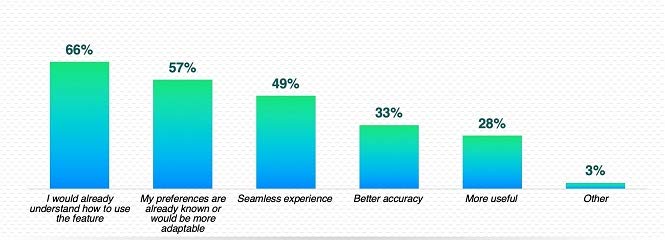Alexa Blogs

At Amazon, we believe voice is the easiest, most natural way to interact with technology. We’ve already seen how Alexa can make customers’ lives more convenient and more productive at home, and the car is another ideal setting. From the daily commute to long road trips with friends or family, these ambient, voice-first experiences enable drivers to be more productive, more informed and more entertained – all while keeping their hands on the wheel and eyes on the road.
The auto industry has been trying to make voice work for years. But in-vehicle voice recognition systems continue to rank among the top complaints for drivers1 -- despite big advances in cloud computing, machine learning, and natural language understanding. Alexa Auto uses the power of AWS to bring the best of ambient voice services like Alexa to customers on the go.
We created Alexa Auto because our customers told us they wanted Alexa in their vehicles. Some even put Echo Dots in their cars, tethered to their mobile hotspot. To better understand the needs of consumers and their expectations for voice in the car, we recently worked with J.D. Power to survey consumers interacting with voice services like Alexa. You can find the complete report here, but there are a few things that stood out:
Customers want to be able to access voice services like Alexa in the car
76% of respondents stated that they would want the same brand of voice service they have at home to be on their next vehicle.

Voice services are becoming an increasingly natural part of daily life for customers. Automakers have taken note, and many are exploring ways to improve the native voice experience in their vehicles. However, customers who have made a voice service part of daily life at home want to be able to access that same service in the car. Those in favor of carrying over the same brand experience in their next vehicle understand the simplicity, utility, and benefit that comes with continuity and consistency of the voice experience as they move from the home to the car.
Customers are making purchasing decisions as a result
59% are more likely to buy from a certain car company if the in-home voice service is available.

A satisfying experience also impacts consumers’ decision making about their next vehicle. More than half of respondents told us that they’d be more likely to purchase a vehicle if it supported their preferred voice service. Those numbers are even higher for Gen Y (74%) and Gen Z (79%) – an important consideration for automakers already thinking about software and infotainment options on future vehicle models.
A seamless, continuous experience is key
The two biggest benefits of bringing the in-home voice service to the car is its ability to provide a familiar and personalized experience. It means customers already know how to use the service when they hop in the car, and that their preferences and settings carry over from one environment to the other.
Benefits of in-home voice service installed in-vehicle include a seamless experience.

At the same time, consumers are looking for those voice services to be able to support functions and experiences unique to the in-vehicle environment. They need navigation to help get them from point A to point B – including directions, traffic, and suggestions for places nearby like restaurants or parking. The key for automakers is to seamlessly blend things like infotainment and vehicle controls with all of the features native to cloud-based voice services.
Takeaways for automakers
First, poor execution of in-vehicle voice experiences has been a real pain point for consumers. While native voice integrations continue to have their challenges, emerging cloud-based services are showing real promise in the vehicle.
Second, consumers are looking for continuity and simplicity. They want their experiences, preferences, and interactions connected in a way that makes daily life easier and more convenient.
Third, tighter integration of infotainment features and connected car functionality with customers’ preferred voice service creates a more satisfying experience. This also drives consideration and loyalty for automakers.
Fourth, the voice service availability in the car will increasingly impact vehicle purchase decisions. This is especially important as younger generations begin shopping for their first vehicle, and as trends like autonomous vehicles and ridesharing reshape consumers’ affinity and loyalties toward automotive brands.
What does this mean for automakers? Automakers should be seeking out hardware and software systems that can accommodate advanced, cloud-based voice services, and supporting services that provide customers with more choice, flexibility, and control over their in-car experience.
Whereas most in-vehicle voice services are limited to specific vehicle functions, Alexa Auto is an extension of the experience used by customers every day at home. Alexa Auto includes many of the things customers know and love about Alexa – music, games, smart home controls, and tens of thousands of skills -- while adding new features like navigation and car control and contextualizing the whole experience for the car. Automotive developers looking to integrate Alexa into vehicles can access the Alexa Auto SDK and start developing today.
Want to learn more about the 2018 J.D. Power/Alexa Automotive – In-Vehicle Voice Connectivity Study? Click here.
1J.D. Power Vehicle Dependability Study
